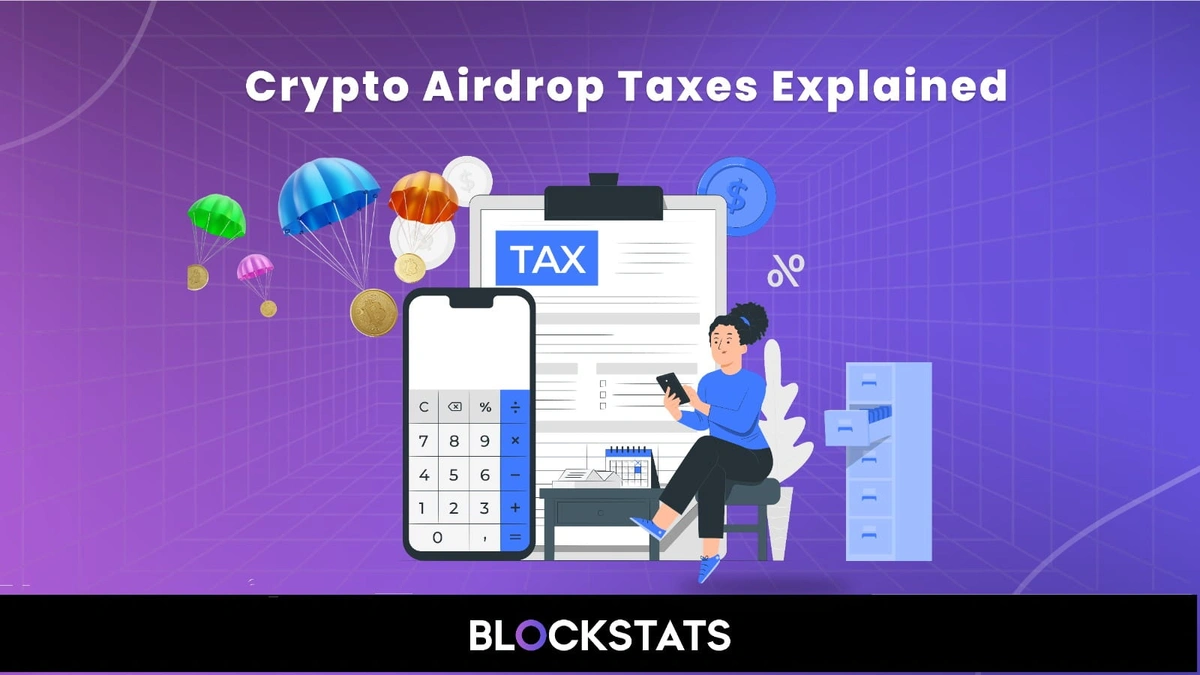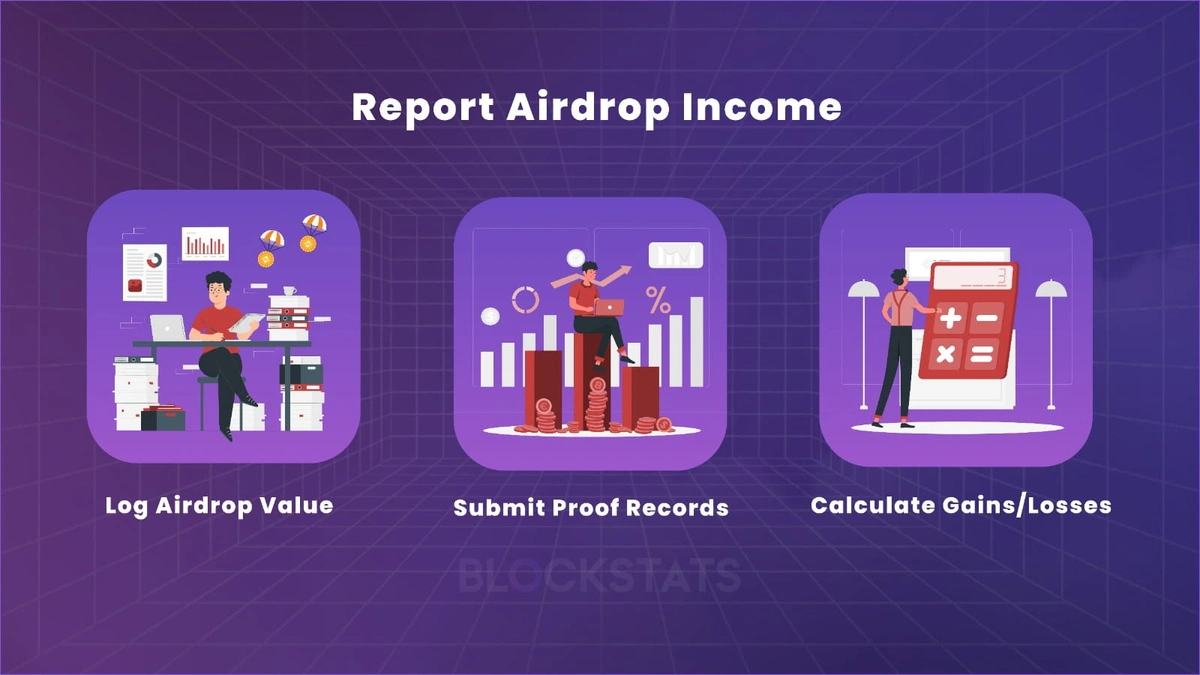How to Track & Report Crypto Airdrops Accurately for Taxes?
As crypto continues to grow in popularity, airdrops have become a common way for new projects to distribute tokens and reward early supporters. While receiving free tokens sounds like a win, it is important to know that crypto airdrops are not just a gift — they are a taxable event.
Failing to properly track and report airdrop income can lead to IRS penalties or audits. In this guide, we will break down exactly how crypto airdrops are taxed, how to track them correctly, and how to report them with confidence.
What Is a Crypto Airdrop?
A cryoto airdrop occurs when a blockchain project distributes free tokens to wallets, often to promote a new network or reward community members. These can be:
-
Automatic: Sent directly to your wallet (e.g., Ethereum or Solana address)
-
Claim-based: You must actively claim the tokens via a dApp or smart contract
-
Snapshot-based: Distributed to holders of a specific token as of a given date
Regardless of how you receive them, the IRS typically considers crypto airdrops as ordinary income at the time of receipt.
How Are Airdrops Taxed in the U.S.?
The IRS has made its stance clear: crypto received from an airdrop is taxable income when you have "dominion and control" over it — meaning, you can transfer, trade, or sell it.
- Taxable Event: You must report the fair market value (FMV) of the airdropped tokens as income on the date you gain access to them.
- Income Classification: Crypto airdrop income is taxed at ordinary income rates, which vary based on your tax bracket (not capital gains rates).
- Future Dispositions: If you later sell or swap the airdropped tokens, capital gains taxes will apply based on the value difference from when you received them vs when you disposed of them.
Example:
-
You receive 50 ABC tokens on March 10 when each is worth $2.
-
You must report $100 of income for that tax year.
-
If you later sell those tokens for $300, your capital gain is $200 (sale price minus the original $100 income basis).
Read next: How to calculate crypto tax in U.S.
How to Track Airdrops Accurately?
Given the volume and complexity of crypto transactions, especially in decentralized finance (DeFi) and NFT ecosystems, tracking airdrops manually is risky and time-consuming. Here is how to stay on top of it:
1. Use a Crypto Tax Software
Crypto tax reporting tools like Blockstats, can help automate airdrop tracking. Features include:
-
Wallet scanning: Detects crypto airdrops automatically based on on-chain activity
-
Fair market value lookup: Calculates token value at the time of receipt
-
Timestamped income recording: Ensures you get accurate income entries
-
Exportable tax reports: Generate reports ready for filing or sharing with your accountant
Using a tool like Blockstats, you can link wallets (e.g., MetaMask, Ledger) and track crypto airdrop receipts across multiple chains, including Ethereum, Solana, Arbitrum, and more, without manual logging.
2. Document Every Airdrop
If you prefer manual tracking or need extra accuracy:
-
Note the token name and quantity
-
Record the date and time the tokens appeared in your wallet
-
Use block explorers (like Etherscan) to get the block number and transaction hash
-
Look up the USD value at the time of receipt
Spreadsheets can work for small volumes, but for active wallets, automation is key.
3. Monitor Claim-Based Airdrops
Sometimes you don’t receive tokens automatically — you have to claim them. The IRS considers crypto airdrop income taxable when the token becomes accessible, not when it is claimed.
So if a token becomes claimable on March 1 but you wait until April 1 to claim it, the taxable event is March 1, assuming you had the right to claim it then.
To avoid discrepancies:
-
Check claim eligibility dates
-
Document your eligibility and access timelines
-
Save screenshots of claim pages if needed
4. Watch Out for Spam or Scam Airdrops
Scammers often send tokens to wallets to lure users into malicious dApps. These spam airdrops are NOT considered taxable if:
-
You never accessed or used the tokens
-
They were unsolicited and had no real market value
Still, it is best to keep a record and avoid interacting with suspicious tokens. If in doubt, consult a tax professional.
How to Report Airdrop Income on Your Taxes?
In the U.S., crypto airdrop income is reported on your Form 1040 (Schedule 1) under “Other Income”.
-
List the total value of airdrops received during the year
-
Provide documentation if needed (from your tax tool or manual logs)
-
For any tokens later sold or traded, calculate capital gains/losses separately using Schedule D & Form 8949
Using crypto tax tools Blockstats, you can export pre-filled forms or summary reports, greatly simplifying the filing process.
Read next: Which crypto tax Form to fill out?
Avoiding Penalties: Best Practices
-
Track in real-time: Do not wait until tax season to sort through wallets.
-
Use multiple tools: Cross-reference data from wallet explorers and tax platforms.
-
Consult a CPA: If you have received significant airdrops or operate across many blockchains, professional guidance is smart.
-
File honestly: Omitting airdrop income can be considered tax evasion, and the IRS has blockchain forensic tools to track on-chain activity.
Read next: How to cryptocurrency avoid tax audit in U.S
Check Blockstats' crypto tax calculator to get a quick preview of your tax liability.
Track & Report Crypto Airdrops Easily with Blockstats
Crypto airdrops may feel like “free money”, but they come with real tax obligations. Proper tracking and timely reporting can help you avoid penalties, protect your gains, and stay on the IRS's good side.
With platforms like Blockstats, you can automate much of the process, from detecting crypto airdrops to calculating FMV and generating tax reports. In a landscape that is constantly evolving, automation and accuracy are your best defence.
Stay informed. Stay compliant. And enjoy your airdrops — the smart way.
Start Your Free BlockStats Account Today
✅ Free trial, no credit card required
✅ Migration assistance from our specialists
✅ AI-powered tax optimization from day one
✅ Cancel anytime, keep your optimized reports

